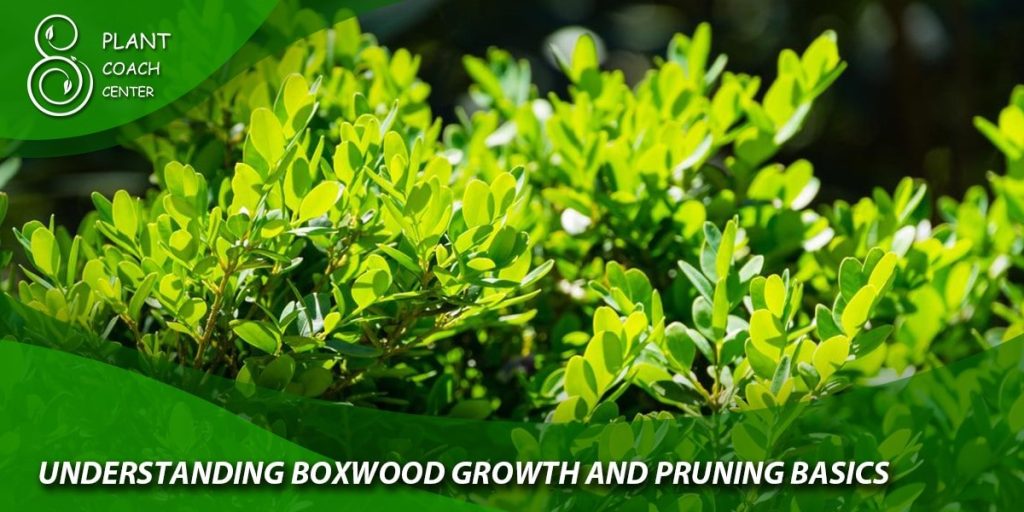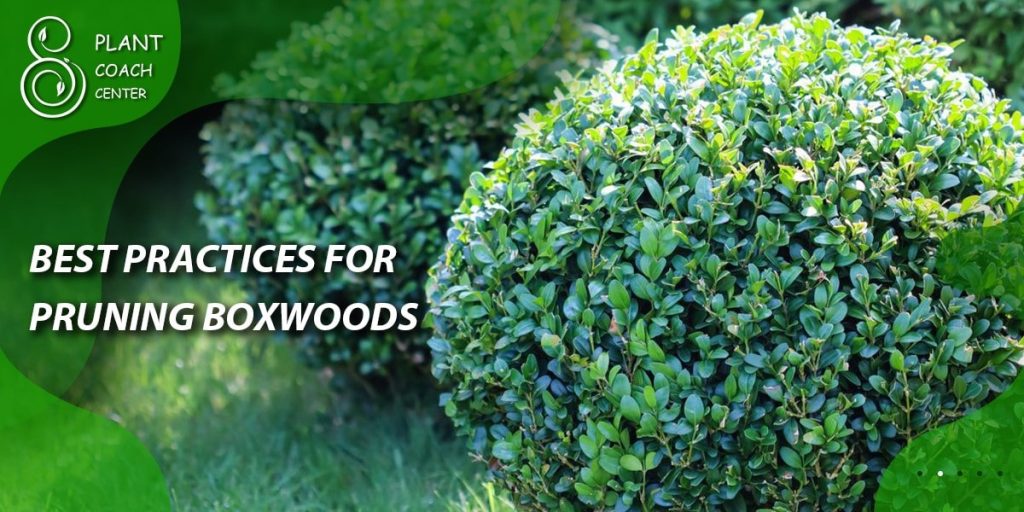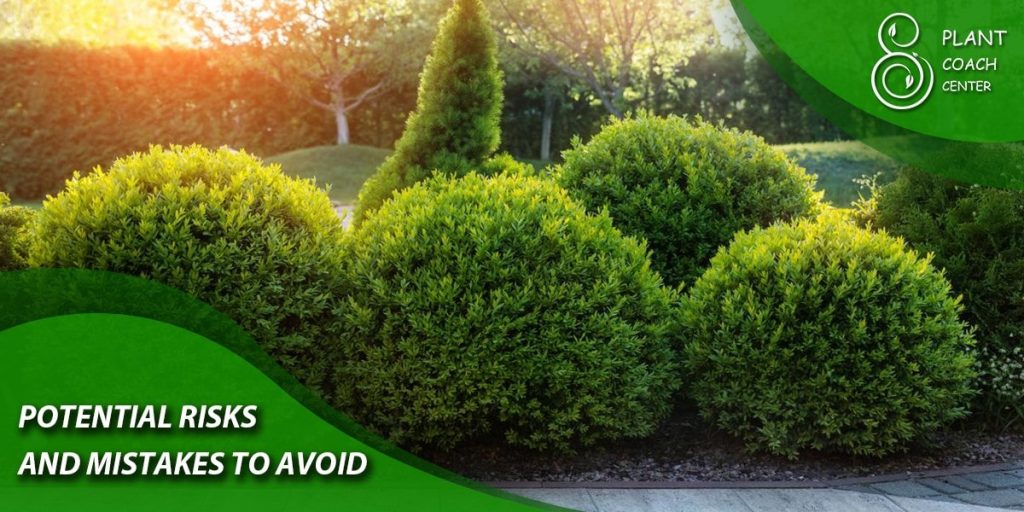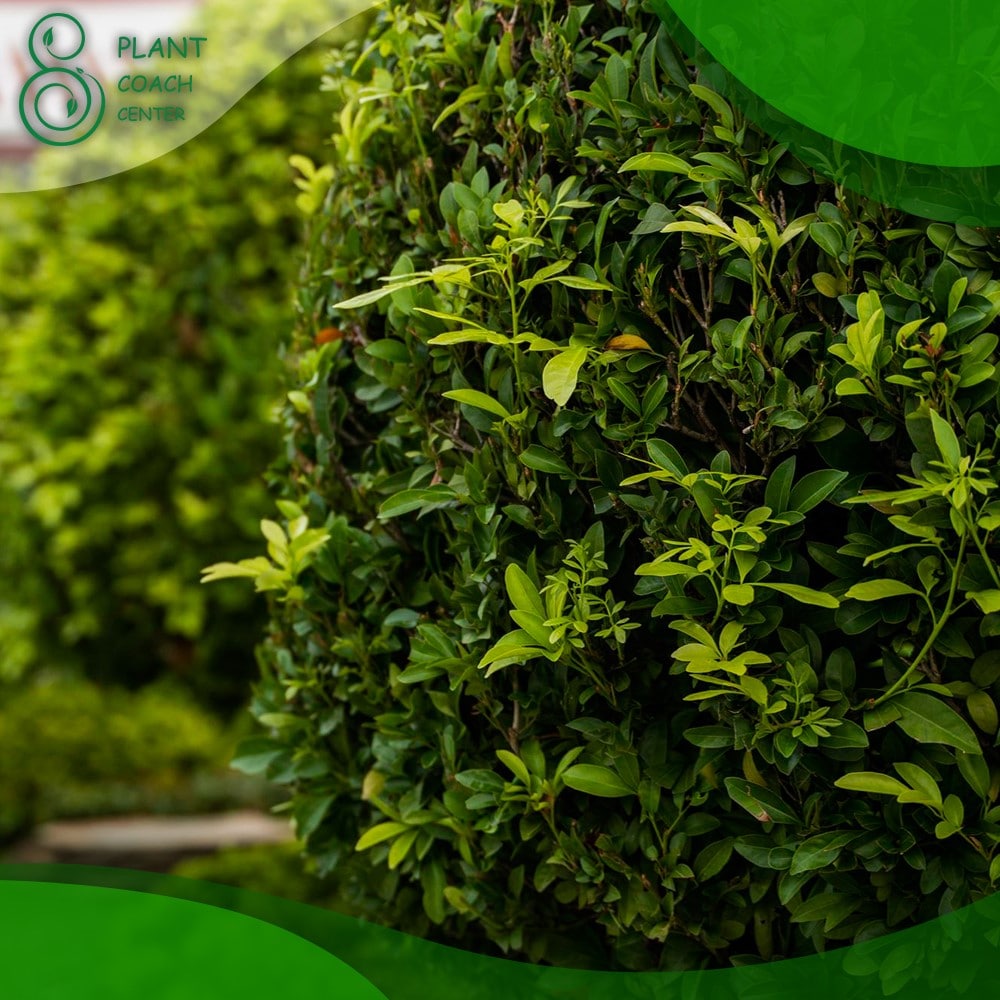Boxwoods are versatile evergreen shrubs known for their dense foliage, compact growth, and ability to be shaped into various forms. These popular ornamental plants have been cultivated for centuries and are valued for their aesthetic appeal in gardens, landscapes, and hedges. Understanding the art of pruning boxwoods is crucial for maintaining their health, shape, and overall beauty.
Understanding Boxwood Growth and Pruning Basics
Boxwood Growth Cycle
Boxwoods undergo an annual growth cycle that consists of periods of active growth and dormancy. Understanding this cycle is essential for determining the ideal time for pruning. The growth cycle includes stages such as bud break, new shoot growth, summer growth, and winter dormancy.
Pruning vs. Shearing: Key Differences
Differentiating between pruning and shearing is vital in achieving proper boxwood maintenance. Pruning focuses on selectively removing specific branches for aesthetic or structural purposes, while shearing involves uniform trimming of the foliage. Knowing when to employ each technique is crucial for maintaining the health and natural shape of boxwoods.
Tools and Techniques for Pruning Boxwoods
Equipping yourself with the right tools and techniques will ensure effective and precise pruning. Essential tools include hand pruners, loppers, hedge shears, and pruning saws. Understanding various pruning techniques such as thinning, heading, and rejuvenation pruning will help you achieve desired results.

Factors Influencing Pruning Timing
Climate and Seasonal Considerations
The timing of boxwood pruning depends on the prevailing climate and the specific requirements of different boxwood varieties. Generally, early spring or late winter, before the onset of new growth, is considered the best time to prune. However, regional variations and extreme weather conditions may necessitate adjustments in pruning schedules.
Age and Health of the Boxwood
The age and health of boxwoods play a significant role in determining the pruning timing. Younger plants require less aggressive pruning, while older, overgrown boxwoods may require rejuvenation pruning. Health assessment is vital to identify signs of diseases, pests, or stress that may require immediate attention.
Boxwood Varieties and Growth Rates
Different boxwood varieties exhibit varying growth rates, shapes, and characteristics. Understanding the growth habits and growth rates of specific varieties is crucial for tailoring pruning strategies accordingly. Varieties such as English boxwoods, Japanese boxwoods, and American boxwoods have unique traits that influence the timing and techniques of pruning.
Signs It’s Time to Prune Your Boxwoods
Overgrowth and Encroachment
When boxwoods become overgrown, they lose their aesthetic appeal and may encroach on nearby structures or plants. If you notice significant size increases, loss of shape, or obstruction of pathways, it’s a clear indication that pruning is necessary.
Unhealthy or Diseased Branches
Inspecting boxwoods regularly for signs of disease, pest infestation, or dead/dying branches is crucial. Pruning infected or damaged branches promptly can prevent the spread of diseases and enhance the overall health of the plant.
Aesthetically Unappealing Appearance
Boxwoods are valued for their attractive and neatly shaped foliage. If your boxwoods appear messy, uneven or have an unsightly appearance, it’s a good indicator that pruning is required to restore their natural beauty.

Best Practices for Pruning Boxwoods
Step-by-Step Guide to Pruning
- Prepare the tools and ensure their cleanliness.
- Assess the boxwood’s overall condition and identify the pruning objectives.
- Start by removing dead, damaged, or diseased branches.
- Thin out crowded areas to improve airflow and light penetration.
- Shape the boxwood according to the desired form, taking care to maintain its natural growth habit.
Pruning Frequency and Maintenance
The frequency of pruning boxwoods depends on their growth rate, desired shape, and specific variety. Typically, boxwoods benefit from annual pruning in late winter or early spring. However, lighter maintenance pruning throughout the year may be necessary to maintain shape and control growth.
Tips for Shaping and Rejuvenating Boxwoods
- Shaping Techniques: Use hand pruners or shears to sculpt boxwoods into desired shapes, such as hedges, spheres, or cones.
- Rejuvenation Techniques: If your boxwoods are overgrown or have lost their shape, more aggressive rejuvenation pruning may be required. Gradual renewal through selective branch removal over a few years can help rejuvenate the plants.
Pruning Techniques for Different Boxwood Varieties
English Boxwoods (Buxus sempervirens)
English boxwoods are renowned for their classic appearance and slow growth. Pruning these boxwoods should focus on maintaining their formal shape while encouraging dense foliage growth. Regular light pruning during the growing season is recommended to retain their neat appearance.
Japanese Boxwoods (Buxus microphylla)
Japanese boxwoods are more tolerant of pruning and can handle more aggressive shaping. However, they also have a faster growth rate than English boxwoods, requiring more frequent pruning to maintain their desired form. Prune Japanese boxwoods in early spring and summer to encourage new growth.
American Boxwoods (Buxus sempervirens var. suffruticosa)
American boxwoods, also known as dwarf or true English boxwoods, are compact and slow-growing. Due to their diminutive size, precision pruning is crucial to preserve their elegant appearance. Light, frequent pruning throughout the growing season helps maintain their compact shape.

Potential Risks and Mistakes to Avoid
Winter Pruning Pitfalls
Pruning boxwoods during freezing temperatures can lead to frost damage, which may harm the plant’s health. Avoid winter pruning and wait until late winter or early spring when the risk of frost has passed.
Pruning Overgrown Boxwoods
Rejuvenating severely overgrown boxwoods in a single pruning session can shock the plants and potentially cause irreparable damage. Gradual rejuvenation pruning over several years is a safer approach to reviving overgrown boxwoods.
Avoiding Disease Spread
Pruning tools can transmit diseases from one plant to another. To prevent disease spread, disinfect your tools between each cut, especially when dealing with diseased branches. Cleaning the tools with a solution of 70% isopropyl alcohol is an effective way to minimize this risk.
Boxwood Pests and Diseases: Identification and Prevention
Common Pests Affecting Boxwoods
- Boxwood Leafminer (Monarthropalpus flavus): Tiny larvae that feed inside the leaves, causing yellowing and leaf drop.
- Boxwood Psyllids (Psylla buxi): Small, jumping insects that suck sap from the leaves, resulting in distorted growth.
- Boxwood Mites (Eurytetranychus buxi): Minute spider-like pests that cause stippling and bronzing of leaves.
Identifying Boxwood Diseases
- Boxwood Blight (Cylindrocladium buxicola and Calonectria pseudonaviculata): Fungal disease causing leaf spots, defoliation, and dieback.
- Boxwood Decline (Volutella buxi): Fungus leading to branch dieback, discoloration, and cankers on stems.
Steps to Prevent Pests and Diseases
- Regularly inspect boxwoods for signs of pests and diseases.
- Maintain proper sanitation by removing fallen leaves and debris from around the plants.
- Implement appropriate cultural practices, such as providing good airflow and avoiding overhead watering.
Pruning Boxwoods for Specific Landscaping Purposes
Hedge Maintenance and Shaping
- Achieving Straight and Uniform Hedges: Use a taut string or level to guide pruning for precise straight lines.
- Creating Curved Hedges: Create templates or guides to shape curves and achieve uniformity.
Topiary and Formal Gardens
- Basic Topiary Shapes: Ball, Cone, Spiral, and Pyramid.
- Advanced Topiary Designs: Animals, Letters, and Intricate Patterns.
Boxwood as Foundation Plants
- Proper Placement and Spacing: Ensure adequate space between boxwoods and structures for proper air circulation.
- Pruning to Maintain Neat and Tidy Appearance: Trim boxwoods to complement the architecture of the building.
Long-Term Boxwood Care Strategies
Fertilization and Soil Management
- Soil Testing: Determine soil pH and nutrient levels to provide targeted fertilization.
- Fertilizer Application: Use balanced, slow-release fertilizers tailored to the specific needs of boxwoods.
Watering Practices for Healthy Growth
- Watering Frequency: Provide deep, thorough watering to encourage deep root growth.
- Mulching: Apply organic mulch around the base of boxwoods to retain moisture and control weeds.
Weed Control
- Hand Weeding: Regularly remove weeds to prevent competition for water and nutrients.
- Mulching: Mulching also helps in suppressing weed growth.

Creative Boxwood Pruning: Artistic Designs and Ideas
Spiral and Cone-Shaped Topiaries
- Achieving Spiral Shapes: Use a sturdy stake or wire framework as a guide to wrap and shape the boxwood into a spiral form.
- Cone-Shaped Topiaries: Gradually trim the boxwood’s sides and top to create a cone-like structure.
Boxwood Knot Gardens
- Planning the Knot Pattern: Design the knot garden layout on paper before executing the pruning.
- Creating the Knots: Trim boxwood hedges or plants to create intricate knot patterns.
Contemporary Pruning Styles
- Geometric Shapes: Prune boxwoods into squares, rectangles, or other geometric forms for a modern and minimalist look.
- Layered Designs: Create multi-tiered boxwood structures for added depth and interest.
Frequently Asked Questions about Pruning Boxwoods
Can You Cut Boxwoods to the Ground?
Cutting boxwoods to the ground is generally not recommended as it can severely shock the plant. However, gradual rejuvenation pruning can help revitalize overgrown boxwoods without causing excessive stress.
Is Boxwood Pruning Harmful to Bees and Wildlife?
Properly timed and executed pruning should not significantly impact bees or wildlife. However, it’s essential to avoid pruning during flowering periods to minimize disturbance to pollinators.
How to Prune Boxwoods in Containers?
Pruning boxwoods in containers follows similar principles to those planted in the ground. Ensure adequate drainage in the container and trim the boxwood to maintain its desired shape and size.
Conclusion: Mastering the Art of Pruning Boxwoods
In conclusion, pruning boxwoods is both an art and a science. Understanding the growth habits, specific needs, and varieties of boxwoods will guide you in choosing the right pruning techniques and timing. Proper pruning ensures healthy, attractive boxwood plants that enhance the beauty of any garden or landscape.
Regular maintenance pruning, along with implementing effective pest and disease prevention strategies, will promote the longevity and vitality of your boxwoods. Whether you aim to maintain neatly shaped hedges, create intricate topiary designs, or add a touch of modernity to your garden, boxwood pruning offers endless possibilities for artistic expression.
Remember to approach pruning with care and consideration, as boxwoods are slow-growing plants that can take time to recover from severe pruning. Always prioritize the health and well-being of the plant while striving for the desired aesthetic effect.
In your journey to becoming a skilled boxwood pruner, observe your plants closely, learn from experience, and continuously refine your techniques. By mastering the art of pruning boxwoods, you will cultivate thriving and picturesque boxwood landscapes that will bring joy and beauty to your outdoor spaces for years to come.
When is the best time to prune boxwoods?
Late winter or early spring.
How often should I prune my boxwoods?
Once a year for maintenance, but light pruning may be needed throughout the year.
Can I prune overgrown boxwoods drastically?
Gradual rejuvenation pruning is safer for overgrown boxwoods.







